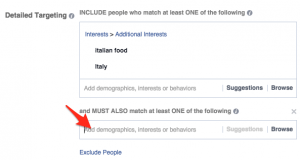 Leads are the lifeblood of a startup. One common mistake made by startup marketing teams is ignoring leads that are not ready to pass to sales. These leads need to be nurtured – helped along – until they are ready. If you ignore them, you have wasted the money you spent to acquire them in the first place, and paying yet again for brand new leads that may or may not be more qualified. And as you nurture your leads, you can learn more about them, using what’s known as progressive profiling. – TM
Leads are the lifeblood of a startup. One common mistake made by startup marketing teams is ignoring leads that are not ready to pass to sales. These leads need to be nurtured – helped along – until they are ready. If you ignore them, you have wasted the money you spent to acquire them in the first place, and paying yet again for brand new leads that may or may not be more qualified. And as you nurture your leads, you can learn more about them, using what’s known as progressive profiling. – TM
Lead Nurturing
So what happens when a prospective buyer fits the profile and has expressed some interest, but is not ready to buy? Maybe he or she made an inquiry or two, looked at some of your collateral, but doesn’t have the money or budget to make the purchase and is not sure when he or she will. If you are using lead scoring, perhaps the score did not meet the MQL hand-off threshold. Or, maybe sales accepted the lead, but when they qualified further and realized the buyer was not ready, did not convert to an SQL.
Since you have already paid money for the lead—the total cost of acquiring the name, any asset printing and mailing costs, and the time of your telemarketer and salesperson—doing nothing would be a waste. Yet many companies do just this. They go out and buy a whole new set of names and start the process all over again. This approach is both inefficient and very expensive.
This is where lead nurturing comes in. Lead nurturing is a systematic process for moving leads to the next state. Nurturing is typically aimed at moving names or one-time inquirers to the MQL stage, but can also be used to drive interest in additional purchases with your installed base of customers.
What distinguishes nurturing from other marketing programs is that it is sustained. Nurturing has been around for decades in an informal fashion. Salespeople making periodic calls to prospective customers they have met but not sold to is very common. More modern nurturing uses marketing automation software to systematize the process, and better target leads with offers designed to appeal specifically to them.
In his book The Leaky Funnel, Hugh Macfarlane adds to the funnel metaphor and describes a more realistic version. At each stage of the funnel, customers drop, or “leak,” out. Imagine the funnel with multiple holes in the side, with leads leaking out all over the place, but for different reasons. Some customers do not have the budget. Others were looking for a particular feature that you do not have. Maybe your price was too high. There are any number of reasons a buyer would leak out and not move down to the next stage.
Highly effective marketing departments segment the leads that fall out by reason and aim their nurturing at those reasons. Prospects who fell out because they were looking for a certain feature, for example, should be sent an e-mail when your product adds that feature. If a new price promotion or pricing scheme becomes available, prospects who fit the profile but fell out for budget or affordability reasons should be targeted. You might send a glowing product review to prospects that researched but did not seriously consider your product.
Creating a lead-nurturing database can be facilitated by lead scoring. Leads with scores below the MQL hand-off threshold can automatically be added. Leads that drop or leak from the funnel should also be added, along with a code or label that indicates the reason.
Progressive Profiling
The process of collecting information about contacts over a period of time is called progressive profiling. The more information your company has for a contact, the better you will be able to target that individual.
One cardinal sin marketers commit is asking prospects too many questions at one time. Doing so will cause them to get annoyed with a telemarketing or sales rep on the phone, and it will likely discourage them from filling out a lead capture form, known as “form abandonment.” In fact, research conducted by MarketingSherpa has consistently revealed that prospective customers fail to complete 60 percent of registration forms, with form length being a major factor.
So, how should you approach progressive profiling? To begin with, in the first interaction, you should request only the essential pieces of information—somewhere between three and five. If you are capturing leads via the web, then you should ask for only the information you need for your next step. For example, name and email address should be sufficient to add these leads to an email nurturing program. Alternatively, you would request a phone number if the next step is to have a telemarketing rep call them.
After you have established contact with prospective customers and elicited their basic information, you can get additional information with subsequent marketing activities. When you send prospects a nurturing e-mail, make certain to add a few additional fields for them to complete—for example, information about their titles, roles, and responsibilities could be useful to a B2B salesperson. Really good marketers make the answers relevant to the offer, in effect customizing the offer based on their responses. In this way, the contacts see value in providing additional information. As an example, you might ask prospects how big their company is and which industry it operates in so that you can send them a customized version of a report your team produced. Creating this type of customizable asset requires a bit more effort, but the continued contact engagement and the reduction in abandonment this extra step generates are worth the effort.
Most modern marketing automation systems include built-in tools for progressive profiling. They automate the request for additional information based on the information that is already contained in the database record for that prospect, or what particular offer is being made to the contact. Progressive profiling still requires up-front planning about the lead flow, a bit more work on automation, and potentially consideration during asset creation.
Business & Finance Articles on Business 2 Community(84)







